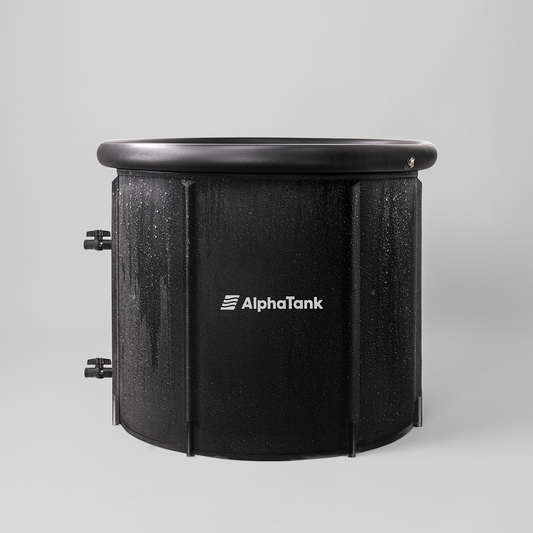Achieving your fitness goals isn't just about working hard in the gym; it's also about how you support your body's recovery afterward. Post-workout recovery is a crucial aspect of any fitness routine, as it determines how well your body bounces back from the stress of exercise. In this article, we'll explore a range of post-workout recovery tips and delve into the potential benefits of incorporating ice baths into your regimen for enhanced recovery.
The Importance of Post-Workout Recovery
Before we dive into specific recovery strategies, let's understand why post-workout recovery is essential:
- Muscle Repair and Growth: Exercise creates microscopic damage in your muscle fibers. Proper recovery allows your muscles to repair and grow stronger.
- Inflammation Reduction: Intense exercise can lead to inflammation. Recovery techniques help mitigate this inflammation, preventing chronic issues.
- Energy Restoration: Replenishing energy stores, like glycogen, is vital for sustained performance and overall vitality.
- Injury Prevention: Adequate recovery reduces the risk of injuries associated with overuse or fatigue.
Now, let's explore effective post-workout recovery tips:
1. Proper Nutrition
Nutrition plays a pivotal role in recovery. After a workout, your body is primed to absorb nutrients. Focus on:
- Protein: Consuming protein-rich foods or shakes helps repair and build muscles. Aim for around 20-30 grams of protein within 30 minutes to two hours post-workout. This could include options like lean chicken, tofu, or a plant-based protein shake.
- Carbohydrates: Carbs replenish glycogen stores. Opt for complex carbs like whole grains, fruits, and vegetables. For example, a quinoa and vegetable stir-fry or a fruit smoothie with oats can be excellent choices.
- Hydration: Rehydrate with water or an electrolyte drink to replace lost fluids. Proper hydration supports muscle function and recovery. Try adding a pinch of sea salt to your water to help replenish lost electrolytes more effectively.
2. Rest and Sleep
Sleep is when your body does most of its repair work. Aim for 7-9 hours of quality sleep to support recovery. During deep sleep, growth hormone release is at its peak, aiding muscle recovery and repair. Create a sleep-friendly environment by keeping your room dark and cool and establishing a consistent sleep schedule.
3. Stretching and Mobility Work
Stretching helps alleviate muscle tightness and reduces the risk of injury. Incorporate static and dynamic stretches into your routine. Focus on areas that feel tight or sore post-workout. Consider including yoga or mobility exercises to enhance flexibility and joint health.
4. Active Recovery
On rest days or light workout days, engage in light activities like walking or cycling. Active recovery promotes blood flow, reducing muscle stiffness and aiding in nutrient transport to muscles. Explore nature trails or scenic routes for a refreshing change of scenery during your active recovery sessions.
5. Massage and Foam Rolling
Massage therapy and foam rolling can reduce muscle tension and enhance flexibility. Foam rolling helps release knots or trigger points, improving blood flow and reducing soreness. Incorporate self-myofascial release techniques into your recovery routine, paying attention to areas of muscle tightness and discomfort.
6. Cold-Water Immersion: Ice Baths
One intriguing recovery method gaining popularity is cold-water immersion, specifically ice baths or cold-water therapy. Here's how it works and why it can be beneficial:
How Ice Baths Aid Recovery
- Reduced Inflammation: Cold exposure can reduce post-exercise inflammation, minimizing muscle soreness and facilitating recovery.
- Muscle Recovery: Ice baths can accelerate muscle recovery by improving blood circulation and reducing tissue damage.
- Pain Relief: Cold-water immersion triggers the release of endorphins, which act as natural painkillers.
- Improved Sleep: Ice baths may promote better sleep quality by lowering your core body temperature, enhancing recovery during sleep.
- Enhanced Mood: Cold therapy can boost mood and reduce stress, contributing to overall well-being.
How to Take an Ice Bath
If you're new to ice baths, here's a basic guide:
- Fill a tub with cold water, ideally between 50°F and 59°F.
- Submerge yourself slowly, ensuring your body is fully immersed.
- Start with short sessions, around 2-5 minutes if you're a beginner.
- Gradually increase the duration as your body adapts, aiming for 10-15 minutes.
- Focus on controlled, rhythmic breathing to stay calm during the immersion. Consider playing calming music or guided meditation tracks to enhance relaxation.
7. Mental Relaxation
Mental recovery is as important as physical recovery. Engage in relaxation techniques like meditation or deep breathing exercises. These practices help reduce stress, improve focus, and support overall well-being. Find a quiet and comfortable space for your mindfulness exercises, and consider using scented candles or essential oils to create a soothing atmosphere.
8. Professional Guidance
Consider consulting a sports medicine professional or physiotherapist for personalized recovery strategies. They can provide tailored advice, especially if you have specific fitness goals or existing injuries. Collaborate with a healthcare expert to develop a customized recovery plan that aligns with your fitness journey.
Conclusion
Post-workout recovery is the secret weapon behind consistent progress and injury prevention in your fitness journey. Incorporate a combination of proper nutrition, rest, mobility work, and techniques like ice baths to maximize your recovery potential. By prioritizing recovery, you'll not only enhance your performance but also ensure long-term health and well-being. Remember that recovery is a holistic process that nurtures both body and mind, allowing you to achieve your fitness goals safely and effectively.




